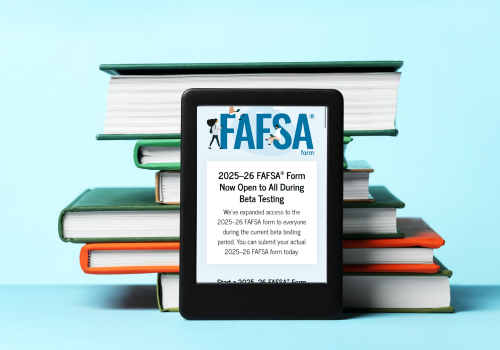Blogs
Our Experiences and Challenges with the 25–26 FAFSA
February 18, 2025
By Brendan Williams
.png)
We are months into the 25–26 FAFSA season, and for most students, the FAFSA has been working well. At uAspire, we've seen students experience significantly fewer issues; when problems arise, a workaround is usually available. Nevertheless, there have been challenges as we support students. Below, we highlight a few of the most common hurdles and share how we advise and support students through them.
Contributor Invitations
The contributor invite process can be inconsistent. In many cases, invites do not appear on the dashboard—even when all the invite information is correct.
- Recommendation: Double-check that the information entered in the contributor invite exactly matches—watch for any extra spaces at the end of names. If everything appears correct, try deleting the FAFSA, have the parent start a new application, and send an invitation to the student.
Manual Tax Entry
Manually entering tax information can be confusing—especially for those who have experienced a change in marital status since filing, ITIN filers, and others. The process lacks sufficient guidance within the form, making it challenging for individuals unfamiliar with tax forms to enter their data accurately.- Recommendation: Encourage all students and families to bring their tax documents—even if you expect to use the Direct Data Exchange (DDX)—to ensure they are prepared for manual entry if needed. Additionally, if there have been any changes in marital status, advise that W-2 forms may be necessary. Remind students to make copies of these documents so they are ready to provide verification to colleges if required.
Missing Student Aid Index (SAI)
After submitting the FAFSA, some students do not receive an SAI in the confirmation email and submission summary. A missing SAI means that colleges cannot determine federal aid eligibility.- Recommendation: This issue may stem from missing consent, signatures, or technical glitches with the form. Verify that everyone listed on the FAFSA has both consented and signed. If everything is in order, it may be an issue with DDX not transferring family size. If this is the case, manually add the family size, correct the submission, and resubmit the FAFSA.
Increased SAI
There have been reports of unexpectedly higher SAIs for continuing college students who are renewing their FAFSA.- Recommendation: Since income, assets, and family size are the key factors affecting SAI, compare amounts from previous years (e.g., 2022 vs. 2023) to identify any discrepancies. Because DDX masks transferred information, you will need to review tax transcripts or tax returns. If no changes are found, contact the college to discuss potential reasons for the increased SAI.
While these are just a few of the common issues we’ve observed, one of this year’s biggest challenges remains the uncertainty surrounding mixed-status families and concerns about FAFSA data protection. Ultimately, families must assess the risks and decide whether to complete the FAFSA and share their information. There are a number of informative family resources put together by organizations nationwide that provide additional context about the FAFSA and how the data is currently protected. We have included a few of those resources below:
- Department of Education: Mixed-Status Family Q&A
- Higher Ed Immigration Portal: Data Protections for FAFSA Information
- National Immigration Law Center: Key Points to Know About FAFSA Data Security